For Disability History Month, assistant curator Julie Holder brought together colleagues Georgia Vullinghs, Georgina Ripley and Sophie Goggins to highlight some of the objects in our collection connected to people in the past and present with disabilities, bodily differences or impairments.
We will all have experiences of disability, impairment, or bodily difference during our lifetimes. In Britain, 23% of the working age population is disabled as well as 45% of adults of retirement age. Disabled people continue to be perceived as a small minority in society, however disability has always been part of the majority human experience. In recent years, the histories of disabled people are starting to appear in museums and heritage spaces, as demonstrated by Curating for Change and the Everywhere and Nowhere project. Yet there is still so much more work to be done.
In the past, and present, people have and have not identified themselves as disabled. Therefore, disability histories here include people with a range of bodily differences and impairments, even if they did not describe themselves as disabled. Many organisations now follow the social model of disability, which recognises that barriers in society disable people, rather than their differences or impairments.
Language and culture are part of these barriers, and the way that bodily differences have been displayed and described has changed over time, often using discriminatory language and reinforcing negative stereotypes (Alexandra Morris and Debby Sneed offer a discussion of suitable alternatives).
As a disabled person, I am passionate about bringing these stories into our galleries and digital spaces because disability histories are part of all our stories and should be recognised as an integral part of the complex tapestry of being human.
Sir Walter Scott’s Walking Stick
One of Scotland’s most famous literary figures is Sir Walter Scott. Scott lived most of his life with an impairment in his right leg that he acquired as a child when he contracted polio. At the time, this was described as ‘lameness’ and he used a walking stick, one of which we hold in our collection. He is holding a walking stick in many of his portraits, such as the one on this mug.
H.UH 2 Walking stick of Sir Walter Scott
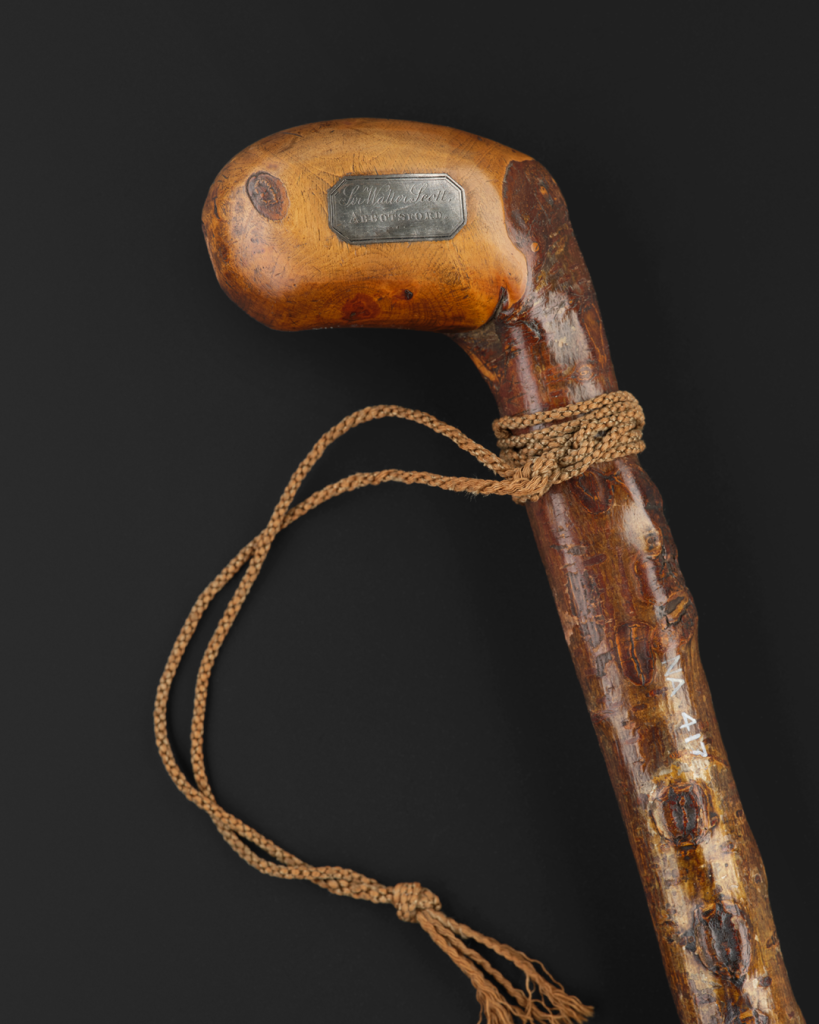
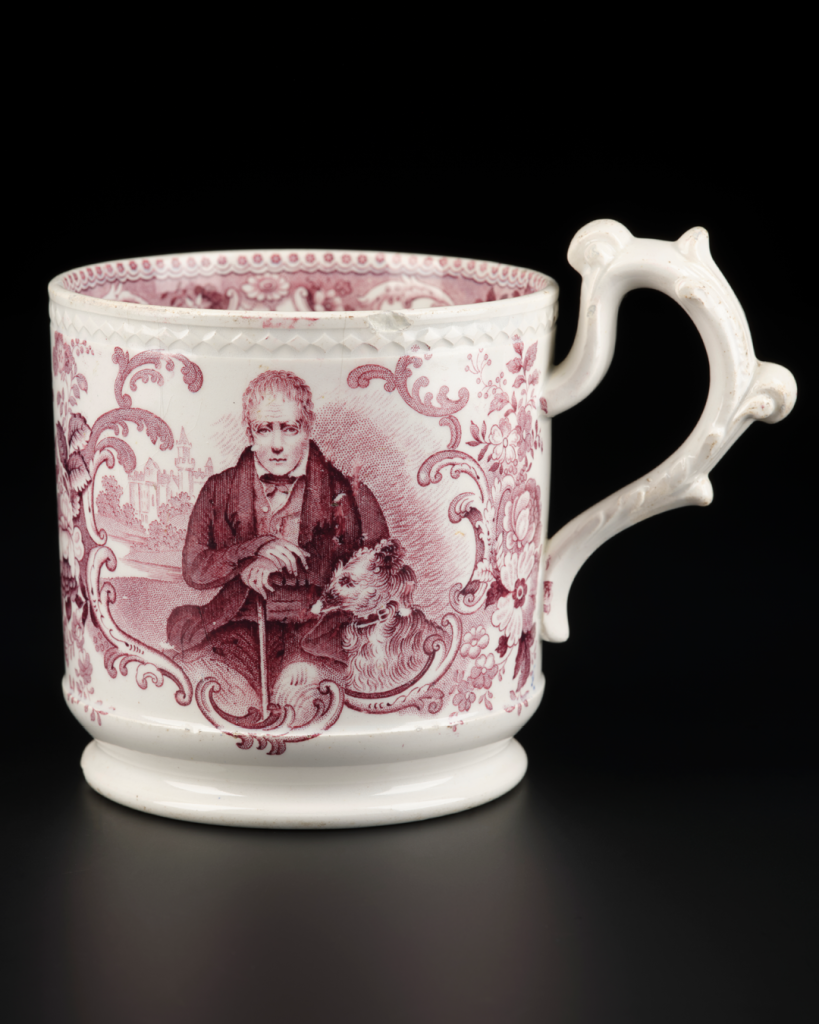
Sir Walter Scott’s Memoirs
We are fortunate to have Scott’s views on his impairment and how he presented himself to the world in his own voice through excerpts from his Memoirs.
For example:
‘Among my companions, my good-nature and a flow of ready imagination rendered me very popular. Boys are uncommonly just in their feelings, and at least equally generous. My lameness, and the efforts which I made to supply that disadvantage, by making up in address what I wanted in activity, engaged the latter principle in my favour; and in the winter play hours, when hard exercise was impossible, my tales used to assemble an admiring audience round Lucky Brown’s fireside.’
‘My frame gradually became hardened with my constitution, and both being tall and muscular, I was rather disfigured than disabled by my lameness. This personal disadvantage did not prevent me from taking much exercise on horseback, and making long journeys on foot.’
Sir Walter Scott
Physical impairments would have been a regular part of many people’s lives during Scott’s lifetime. Barriers within society would have disabled some people more than others depending on class, gender, ethnicity, and type of impairment.
Charles Smith’s Model Bridge
Although there is so much written by and about Walter Scott, the opposite is true for other disabled people in Scotland. The museum holds a matchstick model titled “Model of River Kwai Bridge”, which was described on its label as being ‘made by mouth’ by ex-serviceman Charles Smith who lived at the Thistle Foundation in Edinburgh. This description indicates that he could not use his hands.
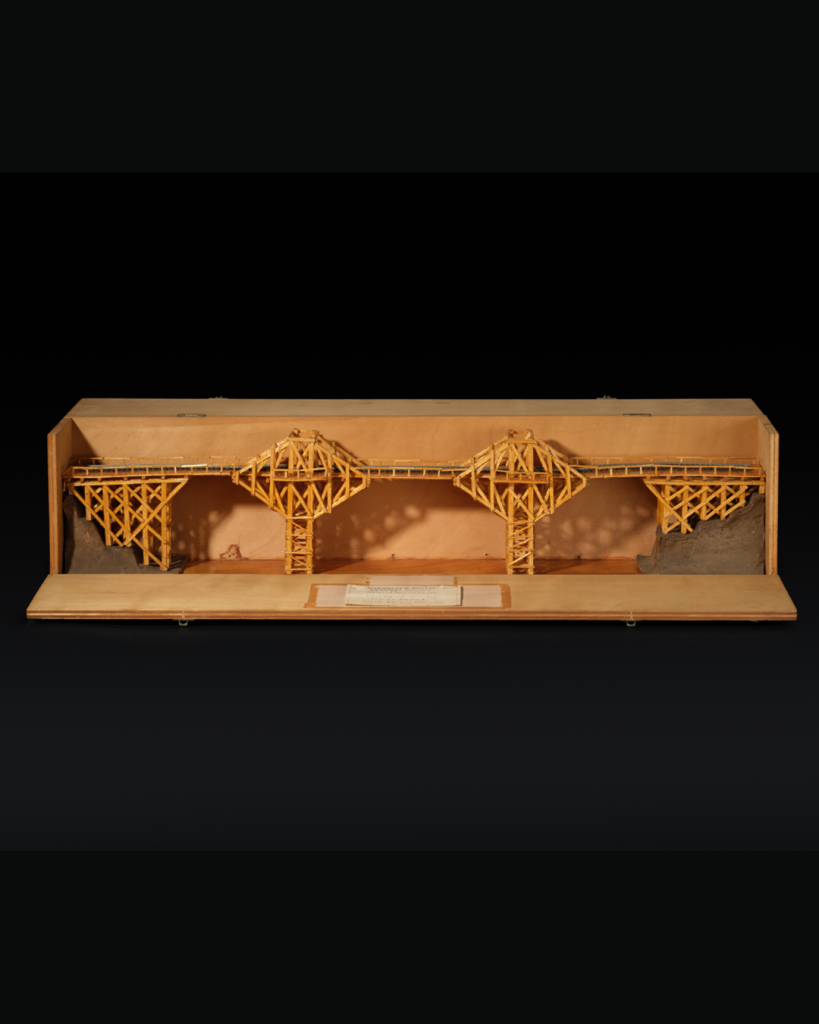
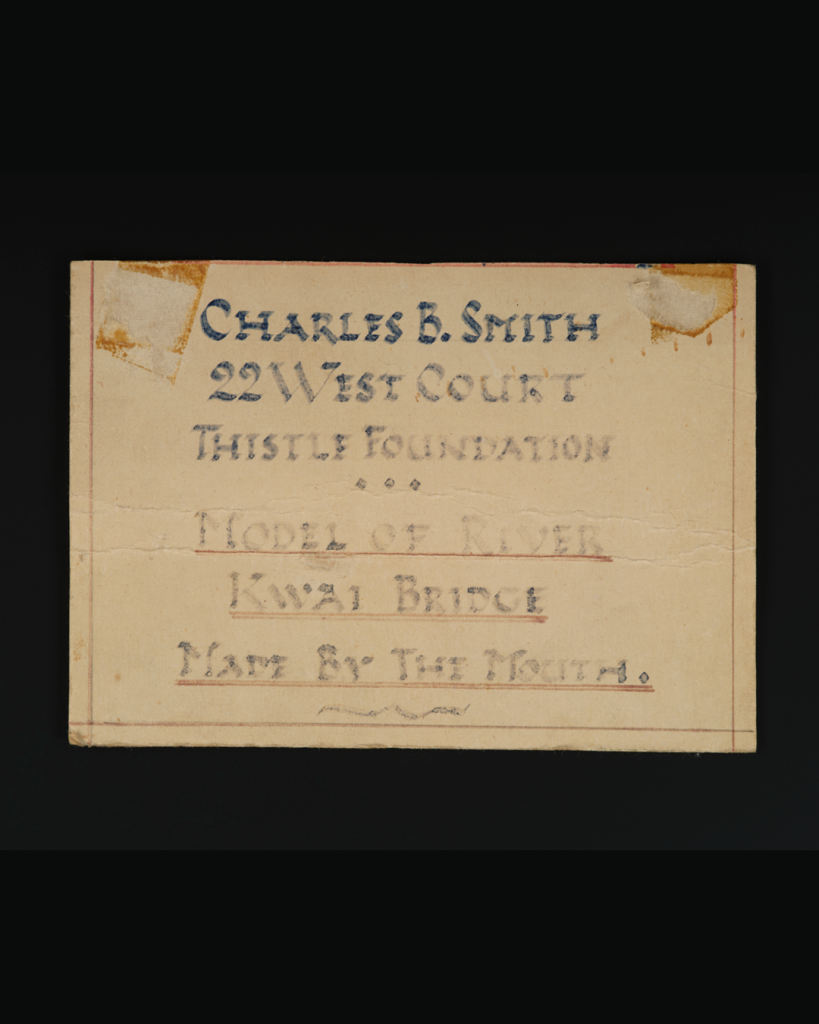
Charles Smith and the Thistle Foundation
The Thistle Foundation was established in 1944 to provide accommodation and medical facilities for people who had become disabled during the Second World War. People lived there with their families, meaning that they were not separated from their loved ones, and they had access to paid work on site. Craft skills were a common feature of rehabilitation after both world wars, and became a means of economic independence for ex-service people. In 1960 the Thistle Foundation community was opened to all disabled people.
But who was Charles Smith and why did he create this model? Was he one of the prisoners of war who was forced to work on the real Burma-Siam Railway? Was his model inspired by the recent film The Bridge Over the River Kwai, released in 1957 – controversial for its historical inaccuracies? We are currently trying to find out more about Charles Smith, so that we can connect his story to the intricate model he created.
William Watt’s ‘Stumpware’
Further along the coast in East Lothian, another ex-serviceman found ways to adapt to life with wartime injuries. A five-piece egg cup set painted by William John Watt during the 1930s was recently donated to the museum.
William Watt’s passion for pottery
Watt lost both his hands and part of one arm at the Battle of Arras in 1917. Once discharged from hospital, Watt attended the Edinburgh College of Art where he learned to paint with brushes strapped to his arm. While he is said to have gained “competence” in watercolour and oil painting, Watt realised that producing painted decorative household pottery for sale would provide him with a more reliable income as an artist. Working from his home at the Longniddry Garden City housing for disabled veterans, Watt purchased blank ceramic cups, jugs and jars, painting them with pretty and delicate floral patterns. He also took requests for commissions, demonstrating range in his ability and creativity.
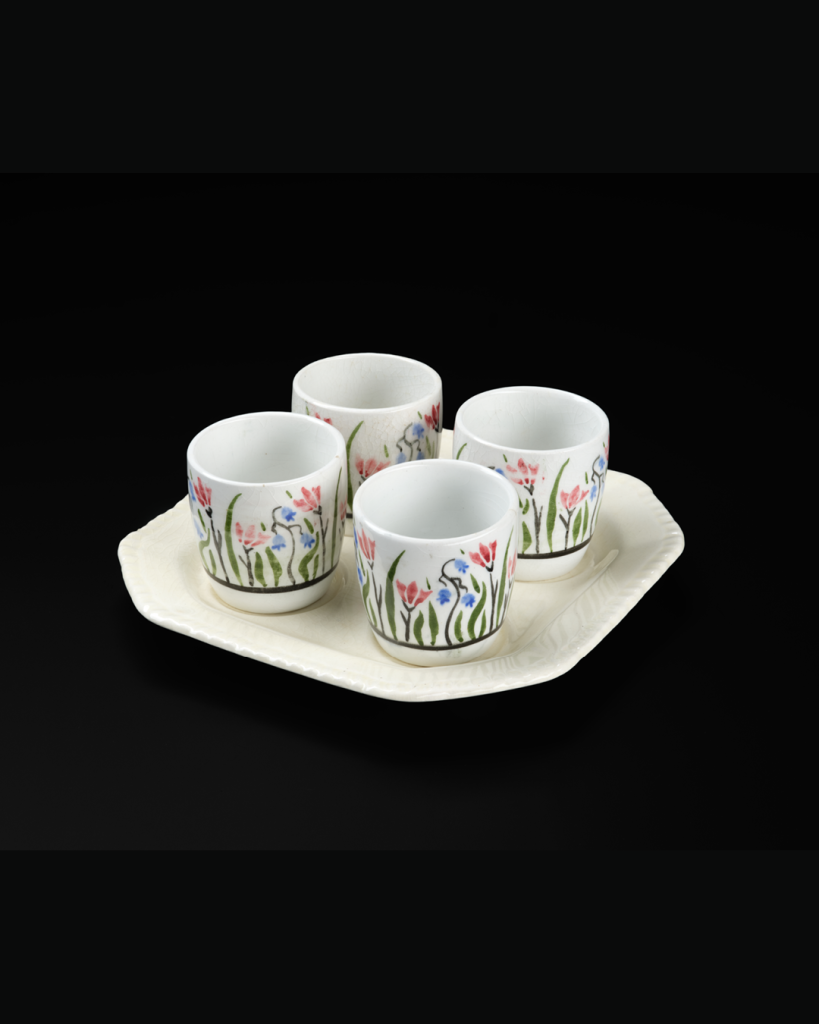
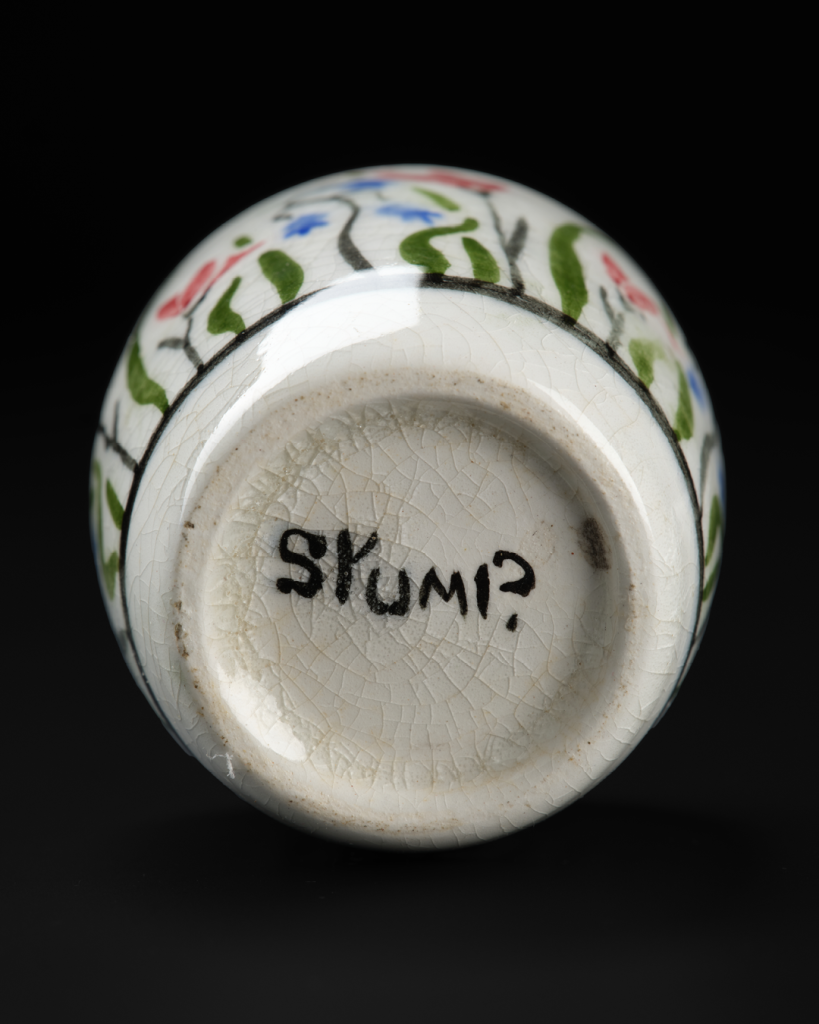
Watt took ownership of his creations and his own impairment by choosing to mark his pieces ‘Stump’, and it seems to have been an important part of his branding. A sales card accompanying another piece of ‘Stumpware’ recently advertised for sale described it as “the work of a totally disabled Ex-Serviceman who lost both hands in the War”. Watt’s identity as a disabled soldier appears to have been central to the making and selling of his ceramics.
FTL Moda NYC
The combined spending power of disabled people – the so-called ‘Purple Pound’ – is estimated to be around £274 billion in the UK alone. Worldwide, this figure is closer to £2.25 trillion, yet disabled people have long been ignored by the fashion industry. Instead, disabled people have been forced to adapt and make their own clothing, or buy unflattering, expensive adaptive clothing.
In 1998, Paralympic sprinter Aimee Mullins fronted the cover of Dazed & Confused’s ‘Fashion-Able’ issue, guest edited by Alexander McQueen, which remains one of the few high-profile examples of disability representation in the mainstream press. That same year, Mullins wore a pair of prosthetic legs carved from solid ash to open McQueen’s Spring catwalk show in Paris, but disabled people have subsequently remained underrepresented on the runway.
The FTL Moda Loving You Autumn/Winter 2015 show was held in collaboration with Fondazione Verticale, an Italian Foundation for spinal cord injuries. A diverse cast of models wore looks by a collective of designers, including this tunic and sculptural mini-dress by Antonio Urzi, whose futuristic designs thoughtfully considered the creative possibilities around disability representation.
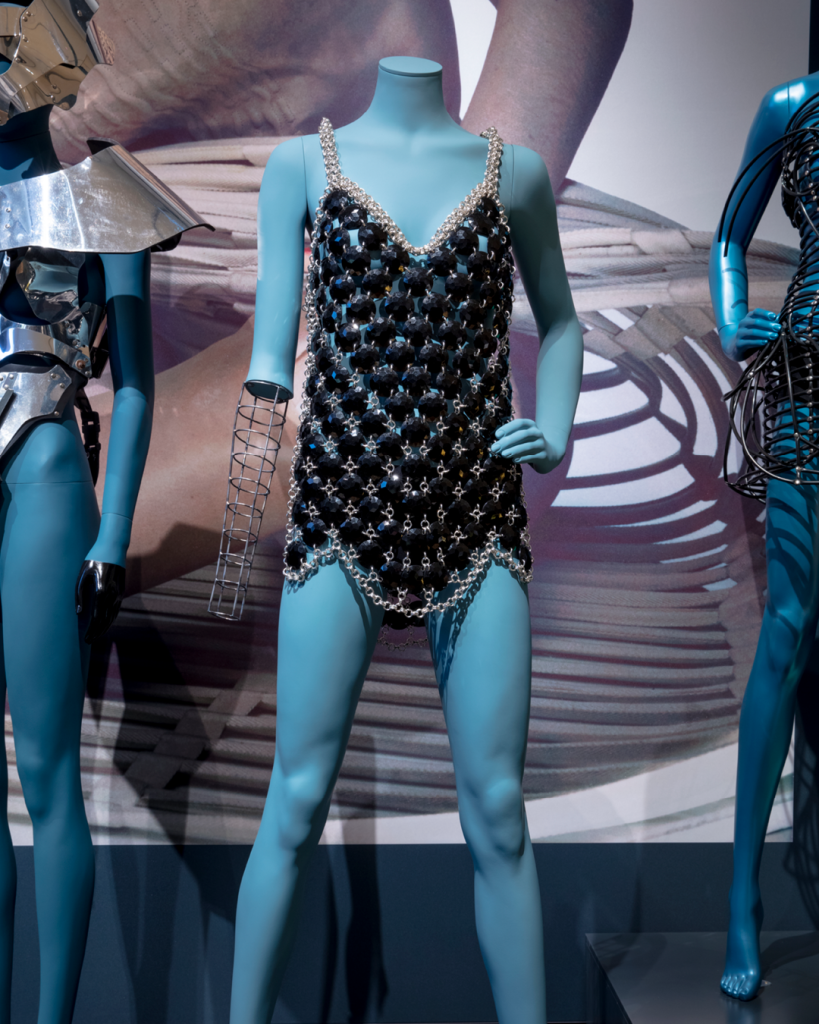

Recollection of the FTL Moda NYC fashion show
In 2019, as part of the Body Beautiful exhibition, model Shaholly Ayers recounted for us her experience of walking in the show:
“Because of the stigma surrounding disability, this was my first time (after modelling for over a decade) that I felt I was being recognized by the industry as a real model. And because I was often told by publications to hide my arm in photos, I wasn’t comfortable in my skin. This show and Antonio’s design changed all of that for me!”
Shaholly Ayers
The tunic was modelled by ‘bionic’ model Rebekah Marine – a name Marine has adopted in reference to the fact she wears the i-limb quantum prosthetic hand, a myoelectric prothesis controlled with electrical signals generated by the user’s own muscles.
Disability fashion stylist Stephanie Thomas argues that the fashion industry needs to recognise that disabled people are not a niche market and that accessible, fashionable clothes that do not cause harm to wearers should be available to everybody. Adaptive clothing is starting to become more affordable and sold in mainstream stores, but the industry needs to work on reducing prices and making these clothes more easily available.
Kelly Knox and The Vine Arm
The Vine Arm was acquired by the museum in 2018 and designed by Alternative Limb Project’s Sophie de Oliveria Barata for model and body confidence activist Kelly Knox. Born without her lower left arm, Kelly chooses not to use prosthetics as an aid, but as an accessory to express her personality and explore aspects of her identity.

The Vine Arm’s technology
The completed piece, The Vine, is a botanical tentacle which contains 26 individual vertebrae that allows the arm to move fluidly from side to side and curve around objects. The Vine is controlled by round sensors in Kelly’s shoes, which sit under her big toes. By pressing on the sensors with different pressure, Kelly can control the speed and direction of the Vine’s movement.
Kelly hoped the piece would help to reinterpret the idea of prosthetics and disability. In Kelly’s own words:
“Wearing these pieces helps redefine beauty and changes the image society sees when they think of disability”
Kelly Knox
The Ramble Tag
There is a long-term problem of non-disabled people acting as the ‘heroic designer’ by trying to solve assumed problems without involving disabled people. When disabled people criticise these products which are not fit for purpose, they are either not listened to or told they are ungrateful. In 2019, Liz Jackson created the term ‘Disability Dongles‘ to describe such items.
However, the opposite is the case for the Ramble Tag, an example of Disability-Centred Design (as explained by Tourettes Hero) acquired by the museum in 2021. The Ramble Tag is a guidance aid which provides greater independence and freedom of movement for those who are visually impaired. The Ramble Tag is an armband worn by a sighted guide with a handle that allows people who are visually impaired to move through spaces, with more independence and without touching their guide.


How was the Ramble Tag created?
The aid was created by Glasgow neighbours Tom Forsyth, who is blind, and Laura Maclean who often would walk their large dogs together with Laura as a guide. Throughout these walks, Tom and Laura were bumping into each other or having to separate over difficult terrain. It became clear that there could be a better way to guide, and Laura and Tom worked together to create the Ramble Tag. They went through different prototypes, testing different materials and designs before bringing the original Ramble Tag to Kickstarter, where their campaign was fully funded.
The Ramble Tag is now used in all airports across Scotland, by National Rail, theatres, and in sports stadiums. The Ramble Tag was a RNIB Design finalist in 2019.
Want to know more?
There are many more histories of people with experiences of disability, bodily differences and impairment that we can tell through our collection. This blog is just one facet of bringing more of these stories into our galleries and sharing them online. The following is a glossary of resources for anyone looking to share disability histories on their platforms:
- Dr Aparna Nair ‘The Mütter and More: Why We Need to be Critical of Medical Museums as Spaces for Disability Histories’
- Shruti Rajkumar ‘How to talk about disability sensitively and avoid ableist tropes’
- Disability Arts Online
- Kate Ford and Clare Barlow ‘Being Human: Embedding Inclusive Practice and Reducing Barriers to Access’
- Museums Association anti-ableist resources
Julie would like to thank consultant Dr Alexandra Morris for advising on the content of this blog.
